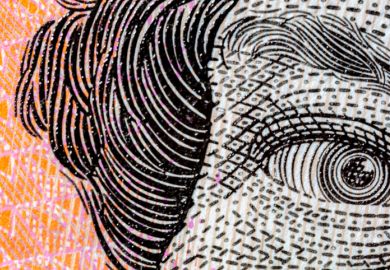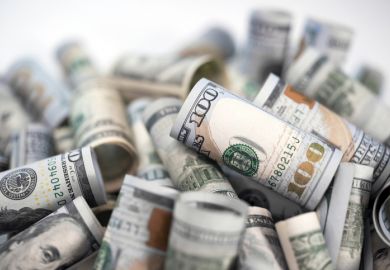The history of world inequality is a fascinating subject, and Branko Milanovic's very readable book uses this as a backdrop to explain the problems of measuring inequality when we look across different countries.
The problem is primarily one of data. When we measure inequality in an individual country such as the UK, we have data on individual households and possibly individuals: this might be data on the whole population or a representative sample. On the basis of this, we can talk about the distribution of incomes in the population. When we study global inequality, there is as yet no such data for the whole world; to be sure, more and more data is being generated over time, but it is far from satisfactory in terms of coverage and consistency.
There are two approaches to dealing with this issue. One is the "united nations" approach: we treat each nation-state as an individual, and use mean income to represent income in that country. This treats Luxembourg on the same footing as the US and China. More interestingly, we can weight each country by its size, the most obvious weighting being population.
If we look at the post-1945 period, the story is rather depressing. We can divide the countries of the world into groups according to their per capita gross domestic product: the rich, contenders (those with incomes not less than 70 per cent of the poorest rich country), Third World and Fourth World. If we compare the distribution of countries in 1960, 1978 and 2000, there has been an almost relentless downward mobility of countries. Those in the rich club in 1960 who exited included much of Latin America: Argentina, Uruguay and Venezuela - Mexico had even become a Third-World country by 2000. Of the contenders, the group that might have hoped to catch up with the rich, many fell into the Third World, including Colombia, Turkey and Jamaica.
The list of countries with extremely low relative incomes in the Fourth World grows relentlessly: by 2000, only two countries had escaped from Fourth World to Third: Egypt and Botswana. If we look at the success stories over this period, they are very few. The most spectacular successes are South Korea and Taiwan, both in the Third World in 1960 and now rich, with Malaysia becoming a serious contender for membership of the club.
Smaller success stories are Singapore, Hong Kong and Mauritius moving up from contenders to join the rich club by 2000.
The headline story is that the Western world (North America and Western Europe) and Japan have continued to enjoy rising per capita income since 1960. The ones that have joined the rich club have managed to do this only by sustaining rapid and consistent economic growth over decades, which allowed them to catch up.
What of the rest? Well, downward mobility is very easy to explain in many cases: war, civil war and political turmoil can cause economic growth to go into reverse, and do so very quickly - contenders of 1978 that fell into the Third World include Iran, Nicaragua and South Africa. There are, of course, also the Soviet centrally planned economies: for many of these there was stagnation in the Brezhnev era followed by a collapse in the aftermath of the big bang reforms in 1990. Post-colonial Africa has been an almost unmitigated disaster: in 1960 Angola was rich, Congo, Ghana and Senegal were contenders. By 2000, most of Africa languished in the Fourth World.
If we look at the distribution of wealth across the world, most people are poor: more than half of it lives on incomes of less than $1,500 per year, 20 per cent on less than $500. In this sense, the distribution of income has not changed that much over the period. To understand what changes there have been in inequality, we need focus on only three countries: India, China and the US. These three are big: the first two in terms of population, the last in terms of income. There has been a modest decline in inequality globally since 1950, largely because India and China have seen steady growth in per capita GDP in excess of the US. Despite the internal political turmoil in the 1960s, China kept on growing - and since 1978 it has been growing at a spectacular rate. Until the 1990s, India's growth was more modest but still faster than the US. The fate of these two countries will determine the trend in global inequality in the coming decades. If they are able to maintain their current rapid economic growth, we will see a third of the world's population become part of a success story. Of course, the distribution of income in China and India is also evolving rapidly and will be part of the picture.
Historically, there is little doubt that there has been a massive increase in inequality in the past 300 years. In 1700, there would have been little difference between Europe, India and China. Then for two centuries, there was a massive increase in global inequality as a result of the industrialisation and urbanisation of the West.
Milanovic's book tells this story, and it is certainly an interesting read.
But I found it a little frustrating in that it does not have enough explanation and could do with a little more economic history to rummage around behind the scenes. However, one bit of history is explored: the shift of the US from a capital exporter before 1980 to becoming a capital importer. This is put forward as one of the main explanations of the failure of many economies since 1980: they were caught in a transition from a cheap money world to one where capital became scarcer and more expensive.
The effect of this was most apparent in the sovereign debt crises of the mid-1980s, which undermined some Latin American economies (and partly explains their downward mobility). Much of Africa is still burdened by debt. This era still persists today in that we have the enormous US double deficits, but savings elsewhere in the world have meant that money is cheap again. Perhaps if the debt problems of the poorest nations are sorted out, we will see some reversal of the stagnation and decline in these nations in the coming decades.
A long-running problem of economic development is the need to enable poor farmers to invest in their livelihood (buying machinery and fertiliser) so they can become more productive. One solution, which has been widely tried and found to be wanting is simply to give these things to farmers or to give cheap loans through state-subsidised banks. Such programmes tend to be very inefficient and undermine the market. Commercial banks will not want to get involved in small loans to the poor: their modus operandi makes the transaction costs too high.
Microfinance, by contrast, operates by allowing poor people to save and borrow: not only do the poor find it difficult to borrow, they have little access to safe places to save. Microfinance is one of the undoubted success stories in the developing world. It was developed by the Bangladeshi economist Mohammed Yunus in the early 1970s, building on earlier institutions such as savings co-operatives. It has become a worldwide movement, with perhaps 65 million people covered in 2002.
The Economics of Microfinance provides an excellent analysis of the evolution of microfinance and of the economic theory behind it. It shows how the issues of adverse selection and moral hazard are addressed in microfinance schemes, and also how schemes have worked in practice. Though the style is that of a textbook, including exercises and numerical examples, the text is well written and an excellent source for economists who want to learn about this topic.
Microfinance has brought many benefits to millions of people, but it is a footnote in the global economy. The main prerequisites for sustained economic growth are the absence of war and political instability. Peace and the rule of law are needed to bring prosperity to all.
Huw Dixon is professor of economics, York University.
Worlds Apart: Measuring International and Global Inequality
Author - Branko Milanovic
Editor - Princeton University Press
Pages - 2
Price - £18.95
ISBN - 0 691 12110 9
Register to continue
Why register?
- Registration is free and only takes a moment
- Once registered, you can read 3 articles a month
- Sign up for our newsletter
Subscribe
Or subscribe for unlimited access to:
- Unlimited access to news, views, insights & reviews
- Digital editions
- Digital access to THE’s university and college rankings analysis
Already registered or a current subscriber? Login



